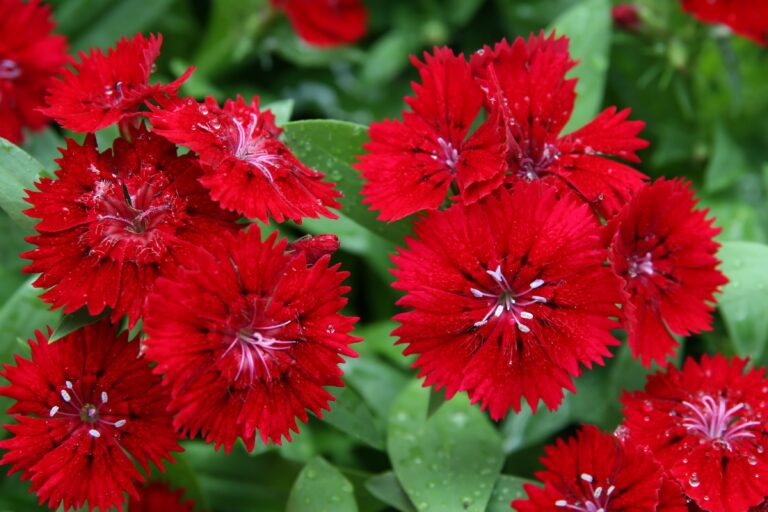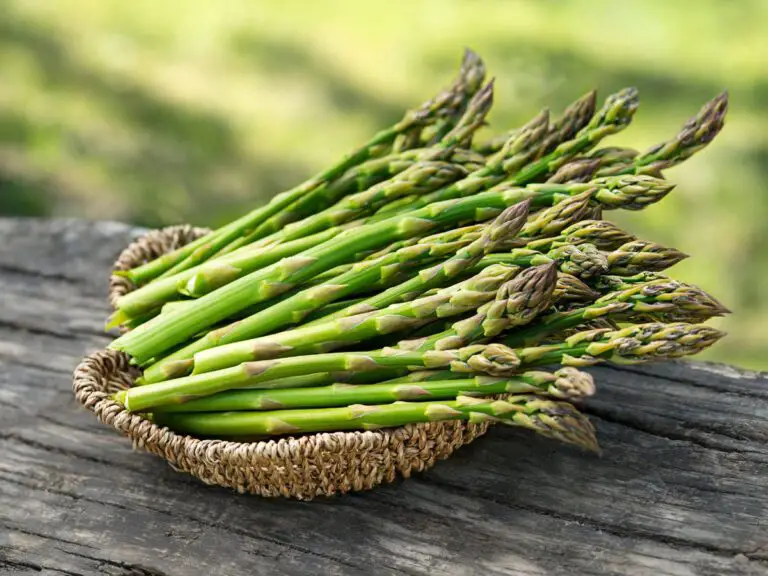New Guinea Impatiens Care Tips
Table of Contents
Soil Requirements
When it comes to choosing the right soil for your plants, it’s crucial to consider the specific needs of each type of greenery you’re nurturing. Different plants thrive in different soil conditions – some prefer well-draining sandy soil, while others thrive in rich, loamy earth. Understanding the soil requirements of your plants will help you create a nurturing environment for their growth and development.
The pH level of the soil is also a crucial factor to consider when determining the ideal soil composition for your plants. Some plants prefer acidic soil, while others thrive in alkaline conditions. Testing the pH of your soil and making adjustments as needed will ensure that your plants have access to the nutrients they need for optimal health and vitality.
Lighting Needs
Proper lighting is essential for the health and growth of your plants. Different plants have varying light requirements, so it’s crucial to understand the needs of each species you’re caring for. Generally, most houseplants thrive in bright, indirect sunlight. Positioning your plants near a window where they can receive ample light without being directly exposed to harsh rays is ideal. Investing in a light meter can also help you determine if your plants are getting sufficient light levels for optimal growth.
It’s important to remember that inadequate or excessive light can lead to stunted growth, yellowing leaves, or even plant death. Pay close attention to your plant’s response to the light it’s receiving and make adjustments as needed. If you notice signs of light stress, such as wilting or leaf discoloration, consider moving your plant to a better-lit area or investing in artificial grow lights to supplement natural sunlight. By providing the right amount of light, you can ensure that your plants thrive and flourish in your care.
Watering Frequency
Consistent watering is crucial for the health and vitality of your plants. Overwatering can lead to root rot, while underwatering can cause wilting and nutrient deficiencies. The key is to find the right balance by checking the moisture level of the soil regularly and adjusting your watering schedule accordingly.
Factors such as plant type, pot size, and environmental conditions will influence how often you need to water your plants. Generally, it’s recommended to water your plants when the top inch of soil feels dry to the touch. Remember, it’s better to water deeply and less frequently than to water lightly and too often to encourage strong root growth. By paying attention to your plants’ individual needs and learning to read their signals, you can establish a watering routine that promotes their overall well-being and helps them thrive.
Temperature Tolerance
When it comes to the temperature tolerance of your plants, it’s important to understand their specific needs to ensure they thrive in your garden or indoor space. Different plants have varying temperature requirements based on their species and origin. Some plants, like succulents and cacti, prefer warmer temperatures ranging from 65°F to 85°F, while others, such as certain ferns and orchids, thrive in cooler environments between 50°F to 70°F. Understanding these preferences can help you create the ideal growing conditions for your plants, promoting healthy growth and blooming.
Extreme temperature fluctuations can stress plants and inhibit their growth. It’s essential to monitor the temperature levels in your gardening areas, making adjustments as needed to maintain a stable and favorable climate for your plants. Factors such as drafts, direct sunlight exposure, and proximity to heating or cooling sources can all impact the temperature around your plants. By being mindful of these variables and providing the right conditions, you can help your plants reach their full potential and flourish in your care.
Table
| Aspect of Care | Tips |
|---|---|
| Light Exposure | New Guinea Impatiens thrive in bright, indirect light. Avoid direct sunlight, especially during hot afternoons. |
| Watering | Keep the soil consistently moist but not waterlogged. Water at the base to prevent leaf wetness. |
| Soil | Use a well-draining, rich potting mix with good aeration. |
| Fertilization | Feed with a balanced liquid fertilizer every 2-3 weeks during the growing season. |
| Temperature | New Guinea Impatiens tolerate temperatures around 45°F (7°C) at night. For optimal growth, plant them about two weeks after the last spring frost when daytime temperatures range between 70°F and 85°F (21°C and 29°C). They prefer warm temperatures and should be kept above 10°C during winter. When temperatures fall below 1°C, their leaves may lighten in color. |
Fertilizing Schedule
To ensure optimal growth and health of your plants, it is crucial to establish a consistent fertilizing schedule. The frequency and type of fertilizer application will largely depend on the specific needs of the plant species you are cultivating. Some plants may require a monthly feeding, while others may only need to be fertilized once every few months. It is essential to keep track of the fertilizing schedule to avoid over-fertilization, which can lead to nutrient imbalances and potential damage to the plants.
When designing your fertilizing schedule, consider factors such as the season, growth stage of the plant, and the type of fertilizer being used. Slow-release fertilizers are ideal for providing a steady supply of nutrients over an extended period, while liquid fertilizers can offer a quick nutrient boost. Remember to always follow the manufacturer’s recommendations for dosage and application methods to ensure that your plants receive the appropriate nutrients in the right amounts.
Pruning Techniques
Pruning is a crucial aspect of plant care that helps maintain the health and shape of your green companions. When it comes to pruning techniques, it’s essential to use sharp, clean tools to make precise cuts. This promotes faster healing and reduces the chances of introducing diseases to your plants. Additionally, always prune at the right time of the year, depending on the specific plant species, to avoid stunting growth or causing stress.
Understanding the growth habits of your plants is key to effective pruning. Whether it’s removing dead or diseased branches, encouraging new growth, or shaping the plant for aesthetic purposes, a targeted approach can make a significant difference in the overall health and appearance of your garden. Regularly inspecting your plants and staying attuned to their needs will enable you to tailor your pruning techniques to suit each individual plant, fostering a thriving and beautiful garden.

Pest Control Methods
To effectively manage pests in your garden, it’s essential to take a proactive approach that combines both preventive measures and targeted interventions. One key strategy is maintaining good garden hygiene by regularly removing debris, fallen leaves, and weeds that can harbor pests. These hiding spots provide a cozy environment for pests to thrive, so keeping your garden clean and tidy can help deter infestations.
Another effective method is introducing beneficial insects that naturally prey on common garden pests, such as ladybugs for aphids or predatory mites for spider mites. Using biological controls like these can help maintain a balanced ecosystem in your garden, keeping pest populations in check without the need for potentially harmful chemical pesticides. By implementing these strategies in combination with proper plant selection and monitoring, you can promote a healthier and more pest-resistant garden environment.
Table
| Pest | Control Methods |
|---|---|
| Aphids | Regularly inspect plants for aphids. Use neem oil as a natural control method. |
| Spider Mites | Monitor for spider mites. Maintain good air circulation. Use insecticides if infestation occurs. |
| Fungus Gnats | Routinely check for fungus gnats. Keep soil consistently moist but not waterlogged. |
| Thrips | Carefully monitor sticky cards and inspect flowers. Thoroughly spray to control thrips. |
| Mealybugs | Watch out for mealybugs and treat promptly if detected. |
Disease Prevention Strategies
To prevent diseases in your plants, it is crucial to maintain good hygiene practices in your gardening routine. Regularly clean your gardening tools and containers with a mixture of water and mild soap to prevent the spread of pathogens. Additionally, avoid overcrowding your plants, as proper spacing allows for better air circulation, reducing the likelihood of fungal diseases.
Furthermore, be mindful of watering your plants at the base to prevent splashing water onto the leaves, which can create a favorable environment for diseases to thrive. Consider using drip irrigation systems or watering cans with narrow spouts to target the soil directly. By implementing these simple yet effective strategies, you can significantly reduce the risk of diseases impacting your beloved plants.
Propagation Methods
Propagation in plants can be an exciting way to expand your garden without having to make additional purchases. One of the most common methods of plant propagation is through stem cuttings. By taking a healthy stem from a plant, removing any leaves, and planting it in a suitable growing medium, you can encourage the development of roots and eventually grow a new plant. This process is often used for a variety of plants, from herbs to houseplants, and can be a rewarding way to increase your greenery collection.
Another popular method of plant propagation is through division. This technique involves splitting a mature plant into multiple parts, each containing roots and shoots, which can then be planted separately to create new individual plants. Division is commonly used for plants like hostas and ornamental grasses, and it can help rejuvenate crowded or overgrown plants while also providing you with more plant specimens to enjoy throughout your garden.

Container Gardening Tips
When engaging in container gardening, it’s crucial to select pots with adequate drainage holes to prevent waterlogging and root rot. Proper drainage ensures that excess water can escape, avoiding the detrimental effects of standing water on plant health. Additionally, using a high-quality, well-draining potting mix tailored to the specific needs of your plants can contribute to their overall growth and success in containers.
Another essential tip for container gardening is to match the size of the pot with the plant’s mature size. Providing sufficient space for root development is essential for promoting healthy growth and longevity in container-grown plants. Overcrowding plants in small containers can lead to competition for resources and result in stunted growth and diminished yields. Opt for appropriately sized containers based on the plant’s ultimate size to support its thriving growth in a container environment.
Outdoor Planting Guidelines
To ensure successful outdoor planting, it is crucial to consider factors like sunlight exposure, soil quality, and plant spacing. Before diving into the actual planting process, it’s important to assess your garden’s unique microclimates to determine the best location for each plant species. Ensure that your chosen spot receives adequate sunlight based on the specific sunlight requirements of the plants you intend to grow. This will help promote healthy growth and optimize the development of flowers, fruits, or foliage. Additionally, pay attention to the quality of the soil in your outdoor planting area to guarantee proper drainage, nutrient availability, and root aeration for your plants.
When planting outdoors, remember to acclimate your plants gradually to their new environment to prevent shock and ensure successful adaptation. Water newly planted seedlings thoroughly but avoid overwatering, as this can lead to root rot and other issues. Proper watering techniques, combined with adequate spacing between plants to allow for optimal airflow and light exposure, will help create a thriving outdoor garden space. Paying attention to these details during the outdoor planting process can set the foundation for healthy plant growth and bountiful harvests in the seasons to come.
Indoor Plant Care
When caring for indoor plants, it’s crucial to provide them with the right environment to thrive. Ensure your plants receive adequate sunlight by placing them near a bright window, rotating them regularly to promote even growth. Keep an eye on the temperature and humidity levels in your home, as variations can impact plant health.
Watering indoor plants can be a delicate balance. Overwatering can lead to root rot, while underwatering can cause wilting and stunted growth. Check the moisture of the soil regularly and water only when the top inch feels dry. Different plants have varying watering needs, so be sure to research each plant’s specific requirements to avoid water-related issues.
Humidity Preferences
To maintain optimal growth and health for your plants, it’s essential to understand their specific humidity preferences. Different plant species have varying levels of tolerance to humidity levels in their environment. While some plants thrive in high humidity conditions, others prefer drier atmospheres. Be sure to research the humidity requirements of each plant in your care to provide the best possible growing conditions.
Properly regulating humidity can prevent issues such as wilting, leaf yellowing, and pest infestations. Monitoring the humidity levels in your plant’s environment and making adjustments as needed will promote vigorous growth and vibrant foliage. Consider using a hygrometer to accurately measure humidity levels and create a suitable microclimate for your plants to thrive.
Seasonal Maintenance
As the seasons change, it is essential to adjust your plant care routine to ensure the health and vitality of your green companions. During the spring months, focus on pruning any dead or damaged branches, promoting new growth and maintaining a tidy appearance. Additionally, consider applying a balanced fertilizer to support healthy development during this active growing period.
Summer brings warm temperatures and increased sunlight, requiring vigilant watering to prevent dehydration. Regularly check the moisture levels in the soil and provide adequate hydration to your plants. Keep an eye out for common pests that thrive in the summer heat and take proactive measures to control infestations before they escalate. With proper attention to seasonal maintenance, you can enjoy a thriving garden year-round.
Overwintering Suggestions
When winter approaches, it’s essential to take proper care of your plants to ensure they survive the colder months. One crucial consideration for overwintering is to move potted plants indoors to protect them from freezing temperatures. Inadequate insulation can lead to frost damage and potential loss of your beloved greenery. Ensure that indoor conditions provide sufficient light and warmth for optimal plant health during the winter.
For outdoor plants that are sensitive to cold weather, consider applying a layer of mulch around the base of the plants to help insulate the roots and retain soil moisture. Additionally, wrapping sensitive plants with burlap or row covers can provide an extra layer of protection from harsh winter conditions. By taking proactive measures to safeguard your plants during the winter, you can help them thrive and flourish when the spring season rolls around.
Common Mistakes to Avoid
One of the most common mistakes gardeners make is overwatering their plants. It is crucial to understand the specific watering needs of each plant species to avoid root rot and other water-related issues. Remember, it’s better to underwater than to overwater, as most plants can recover from slight dehydration more easily than from waterlogged soil.
Another mistake to avoid is neglecting the importance of proper lighting conditions. Insufficient light can lead to leggy growth, poor flowering, and overall weak plant development. Be sure to research the light requirements of your plants and provide them with the appropriate amount of sunlight or artificial light to thrive.
How do I know if I am overwatering my plants?
Overwatering can lead to root rot and other issues. Make sure to check the moisture level of the soil before watering and allow it to dry out slightly between waterings.
What is the best way to prevent diseases in my plants?
To prevent diseases, make sure to keep your plants well-ventilated, avoid overhead watering, and remove any infected leaves or stems promptly.
Can I propagate my plants from cuttings?
Yes, many plants can be easily propagated from cuttings. Make sure to use a rooting hormone and provide the proper environmental conditions for successful propagation.
What are some common mistakes to avoid when container gardening?
Some common mistakes to avoid in container gardening include using pots without proper drainage, over or under-watering, and not providing enough sunlight for your plants.
How should I care for my indoor plants during the winter months?
During the winter months, make sure to keep your indoor plants away from drafty windows, increase humidity levels if necessary, and reduce watering frequency due to lower light levels.







